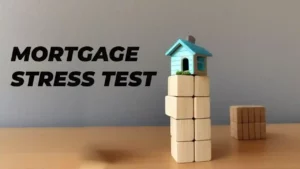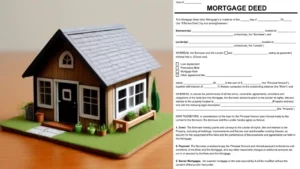Mortgagerateslocal.com – Are you a first-time home buyer who is eligible for a VA loan? If so, you may be wondering how to use this benefit to achieve your dream of homeownership. A VA loan is a mortgage loan that is guaranteed by the Department of Veterans Affairs (VA) and offered by private lenders.
It can help you buy a home with no down payment, no private mortgage insurance (PMI), and lower interest rates than conventional loans. Sounds great, right? But before you start looking for your dream home, you need to know some important things about VA loans and how they work.
We will guide you through the steps of buying your first home with a VA loan. By the end of this post, you will have a clear understanding of how to buy your first home with a VA loan.
You will also learn about some of the state and federal programs that can help you with your down payment, closing costs, and home buying education. Ready to get started? Let’s go!
What is a VA Loan and How Does It Work?
A VA loan is a type of mortgage loan that is backed by the VA. This means that if you default on your loan, the VA will pay the lender a portion of the loan balance. This reduces the risk for the lender and allows them to offer you more favorable terms than conventional loans. Some of the benefits of a VA loan are:
- No down payment required. You can buy a home with 100% financing, as long as the loan amount does not exceed the VA’s loan limit for your area. The VA loan limit is $548,250 for most counties, but it can be higher in some high-cost areas.
- No PMI required. PMI is a type of insurance that protects the lender in case you default on your loan. It is usually required for conventional loans that have a down payment of less than 20%. PMI can add hundreds of dollars to your monthly mortgage payment. With a VA loan, you don’t have to pay PMI, which can save you money and increase your buying power.
- Lower interest rates. VA loans typically have lower interest rates than conventional loans, which can save you thousands of dollars in interest over the life of the loan. The exact interest rate you get will depend on your credit score, loan amount, loan term, and other factors.
- Flexible credit requirements. VA loans are more lenient than conventional loans when it comes to credit requirements. You don’t need a perfect credit score to qualify for a VA loan. The minimum credit score for a VA loan is 620, but some lenders may accept lower scores. You also don’t need a long credit history or a high income to qualify for a VA loan. The VA does not have a specific income requirement, but it does require that you have a stable and sufficient income to cover your mortgage payment and other debts. The VA also considers your residual income, which is the amount of money you have left after paying your monthly expenses. The VA has a minimum residual income requirement that varies by region and family size.
To qualify for a VA loan, you also need to meet the VA’s service eligibility requirements. You must be one of the following:
- A veteran who served at least 90 consecutive days of active duty during wartime, or 181 days of active duty during peacetime, or was discharged for a service-connected disability
- A current active duty service member who has served at least 90 consecutive days
- A National Guard or Reserve member who has served at least six years, or was activated for at least 90 consecutive days, or was discharged for a service-connected disability
- A surviving spouse of a service member who died in the line of duty or from a service-connected disability, and who has not remarried
To prove your service eligibility, you need to obtain a Certificate of Eligibility (COE) from the VA. A COE is a document that shows the lender that you are eligible for a VA loan. You can apply for a COE online, by mail, or through your lender.
How to Find a VA-Approved Lender and Compare Loan Options
Once you have your COE, you need to find a lender who is approved by the VA to offer VA loans. Not all lenders are VA-approved, so you need to do some research and compare different lenders before you choose one. Some of the factors you should consider when choosing a lender are:
1. The interest rate and fees they offer
Different lenders may offer different interest rates and fees for the same loan amount and term. You should shop around and compare the annual percentage rate (APR) of different lenders, which includes the interest rate and the fees.
The APR will give you a better idea of the true cost of the loan. You should also compare the origination fee, which is a fee charged by the lender for processing your loan. The origination fee for a VA loan can be up to 1% of the loan amount, but some lenders may charge less or waive it altogether. You should also ask about other fees, such as appraisal fee, title fee, recording fee, etc.
2. The customer service and reputation they have
You want to work with a lender who is responsive, knowledgeable, and trustworthy. You should check the reviews and ratings of different lenders online, and ask for referrals from friends, family, or your real estate agent. You should also check the lender’s accreditation and complaint history with the Better Business Bureau (BBB) and the Consumer Financial Protection Bureau (CFPB).
3. The loan options and programs they offer
Different lenders may offer different loan options and programs for VA loans, such as fixed-rate or adjustable-rate loans, 15-year or 30-year loans, jumbo loans, cash-out refinance loans, interest rate reduction refinance loans (IRRRLs), etc.
You should compare the pros and cons of different loan options and programs, and choose the one that best suits your needs and goals. You should also ask the lender about any state or federal programs that can help you with your down payment, closing costs, or home buying education. For example, in Virginia, you may be eligible for the following programs:
- Closing Cost Assistance Grant: This grant is available for home buyers who have a Rural Housing Service or Veterans Affairs loan through Virginia Housing. First-time buyers qualify, as well as repeat buyers who are purchasing in a designated Area of Economic Opportunity. The grant can cover closing costs up to 2% of your home’s purchase price and does not need to be paid back. Income and sales price limits apply.
- Down Payment Assistance Grant: This grant is available for qualified first-time buyers who are purchasing a home with a Virginia Housing loan. The grant can provide 2% to 2.5% of the home’s purchase price to apply to a down payment and does not need to be paid back. Income and sales price limits apply.
- Mortgage Credit Certificate (MCC): This is a federal tax credit that can reduce your federal income tax liability by up to 20% of the mortgage interest you pay each year. The MCC is available for first-time buyers who are purchasing a home with a Virginia Housing loan. Income and sales price limits apply.
- Homebuyer Education: This is a free online course that can help you prepare for the home buying process and homeownership. The course covers topics such as budgeting, credit, loan options, home inspection, closing, and more. The course is required for some of the Virginia Housing programs, such as the Down Payment Assistance Grant and the MCC.
How to Choose a Home that Meets the VA’s Minimum Property Requirements
After you have chosen a lender and a loan option, you can start looking for a home that meets your needs and preferences. You can work with a real estate agent who is familiar with VA loans and can help you find a suitable home. You can also search for homes online using websites such as Zillow, Trulia, or Realtor.
However, not all homes are eligible for a VA loan. The VA has certain minimum property requirements (MPRs) that the home must meet in order to qualify for a VA loan. The MPRs are designed to ensure that the home is safe, sanitary, structurally sound, and meets the local building codes and standards. Some of the MPRs are:
- The home must have adequate living space for the borrower and their family. The home must have at least one bedroom, one bathroom, a kitchen, and a living area. The home must also have adequate heating, cooling, ventilation, and electrical systems.
- The home must be free of any hazards that could affect the health or safety of the occupants. The home must not have any defective conditions, such as defective paint, mold, termites, asbestos, lead, radon, etc. The home must also have adequate drainage and water supply.
- The home must be accessible and adaptable for the borrower and their family. The home must have a clear and unobstructed entrance and exit, and must be able to accommodate any modifications or improvements that the borrower may need, such as ramps, grab bars, etc.
- The home must be appraised by a VA-approved appraiser. The appraiser will inspect the home and verify that it meets the MPRs. The appraiser will also determine the fair market value of the home, which will be the maximum loan amount that the VA will guarantee. The appraiser will issue a Certificate of Reasonable Value (CRV), which will state the appraised value and any repairs or conditions that the home must meet before the loan can be approved.
How to Apply for a VA Loan and Get a VA Appraisal
Once you have found a home that meets the MPRs and your budget, you can make an offer to the seller. You should include a contingency clause in your offer that states that the offer is subject to the approval of a VA loan and a satisfactory VA appraisal. This will protect you in case the loan or the appraisal is not approved, and allow you to cancel the contract without losing your earnest money deposit.
After the seller accepts your offer, you can apply for a VA loan with your lender. You will need to provide some documents to the lender, such as:
- Your COE
- Your income and employment verification, such as pay stubs, W-2 forms, tax returns, etc.
- Your bank statements and other asset statements, such as retirement accounts, stocks, bonds, etc.
- Your credit report and score
- Your purchase contract and earnest money receipt
- Any other documents that the lender may require
The lender will review your documents and verify your income, assets, credit, and debt. The lender will also order a VA appraisal for the home you want to buy. The VA appraisal will cost you around $500 to $800, depending on the location and size of the home. You can pay for the appraisal fee at closing, or you can ask the seller to pay for it as part of the negotiation.
The VA appraisal will take about 10 to 14 days to complete. The appraiser will visit the home and inspect it for the MPRs and the fair market value. The appraiser will issue a CRV, which will state the appraised value and any repairs or conditions that the home must meet before the loan can be approved. The CRV will be sent to the lender and the VA.
If the appraised value is equal to or higher than the purchase price, the loan can proceed to the next step. If the appraised value is lower than the purchase price, you have three options:
- You can renegotiate the purchase price with the seller to match the appraised value
- You can pay the difference between the purchase price and the appraised value in cash
- You can cancel the contract and walk away from the deal
If the appraisal reveals any repairs or conditions that the home must meet, you have two options:
- You can ask the seller to make the repairs or meet the conditions before closing
- You can make the repairs or meet the conditions yourself after closing, using your own funds or a VA renovation loan
How to Close on Your VA Loan and Move into Your New Home
After the loan and the appraisal are approved, you are ready to close on your VA loan and move into your new home. The closing is the final step of the home buying process, where you sign the loan documents, pay the closing costs, and get the keys to your new home. The closing will take place at a title company, an attorney’s office, or the lender’s office. You will need to bring some items to the closing, such as:
- Your photo ID
- Your cashier’s check or wire transfer for the closing costs and any down payment
- Your homeowner’s insurance policy and proof of payment
- Any other documents that the lender or the title company may require
The closing costs for a VA loan are typically 2% to 5% of the loan amount, depending on the lender, the location, and the loan type. Some of the closing costs are:
- Origination fee
- Appraisal fee
- Title fee
- Recording fee
- Survey fee
- Credit report fee
- Flood certification fee
- VA funding fee
The VA funding fee is a one-time fee that the VA charges to help cover the cost of the VA loan program. The VA funding fee is 2.3% of the loan amount for first-time users, and 3.6% of the loan amount for subsequent users.
The VA funding fee can be paid in cash at closing, or it can be rolled into the loan amount. The VA funding fee can be waived for veterans who receive disability compensation from the VA, or for surviving spouses of veterans who died in service or from a service-connected disability.
You can ask the seller to pay for some or all of your closing costs, up to 4% of the purchase price. This can help you reduce your out-of-pocket expenses and save money. However, this may affect your negotiation power and the purchase price.
You can also ask your lender to pay for some or all of your closing costs, in exchange for a higher interest rate. This can help you lower your upfront costs, but it will increase your monthly payment and the total interest you pay over the life of the loan.
At the closing, you will sign the loan documents, such as:
- The promissory note, which is a legal document that states that you promise to repay the loan, the interest rate, the loan term, and the monthly payment
- The deed of trust, which is a legal document that states that the lender has a lien on the property until you pay off the loan
- The escrow account disclosure, which is a document that states how much money you will pay each month for your property taxes and homeowner’s insurance, and how the lender will hold and disburse these funds
- The initial escrow statement, which is a document that states the amount of money that the lender will collect at closing to start your escrow account
- The closing disclosure, which is a document that summarizes the final loan terms, the loan costs, and the cash to close
You should review the loan documents carefully and make sure that they match what you agreed to with the lender. You should also ask any questions that you may have and clarify any doubts that you may have. You should not sign any document that you do not understand or agree with.
After you sign the loan documents, you will pay the closing costs and any down payment with your cashier’s check or wire transfer. You will also receive the keys to your new home and a copy of the loan documents.
Conclusion
Buying your first home with a VA loan can be a rewarding and exciting experience. A VA loan can help you buy a home with no down payment, no PMI, and lower interest rates than conventional loans.
However, you need to know how to qualify for a VA loan, how to find a VA-approved lender, how to choose a home that meets the VA’s MPRs, how to apply for a VA loan and get a VA appraisal, and how to close on your VA loan and move into your new home.




